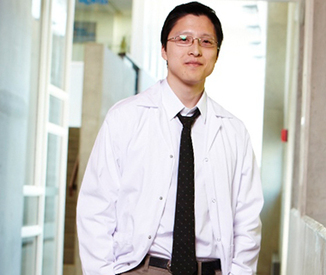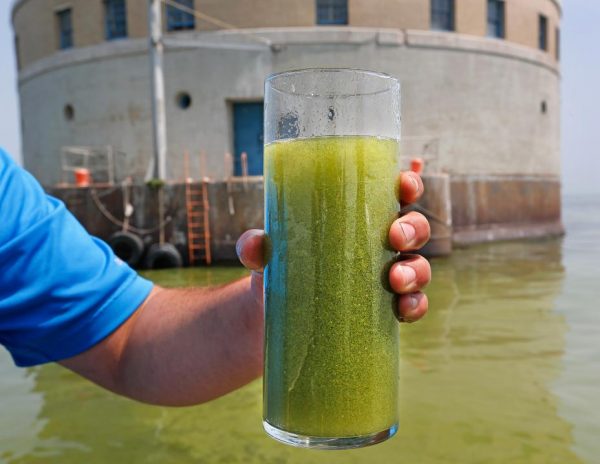AI May be Monitoring Water Supplies Someday Soon

Dr. Alex Wong. (Credit: http://www.eng.uwaterloo.ca/~a28wong/)
Right now, when an expert at a water treatment plant detects cyanobacteria in a sample, they have to take action quickly. Some treatment facilities can handle cyanobacteria, but many smaller systems can’t, and separate water supplies such as those from private wells are typically not tested at all.
A recent feasibility study of new artificial intelligence (AI) water monitoring technology may mean an easier, more cost-effective solution for water treatment plants—especially for smaller and more rural municipalities. A team from the University of Waterloo (UW) has developed AI software that can identify and count various types of cyanobacteria in water samples. UW systems design engineering professor Alexander Wong spoke to EM about the technology.
Automating a painstaking process
“We thought this might be interesting to investigate because when people are doing this type of water analysis, they need to do it manually,” explains Dr. Wong. “Not that many people even have the expertise to do it, and even if they do, the need to do it manually means looking at the samples and counting every single microorganism inside them, which is a really painstaking process. So we thought, ‘Well, we think this is something that can be automated,’ mainly because of our backgrounds in AI. So our thought was, given our expertise in artificial intelligence, maybe we can leverage the machine to help us with this task so we can do it much faster and much more frequently.”

Schematic of overall process of image acquisition and analysis. (Credit: Jin et al., https://www.nature.com/articles/s41598-018-27406-0/figures/1.)
The result was an AI system that uses a microscope and software to analyze water samples, searching for algae cells, and categorizing and counting any cells it finds.
“The user has to take a sample and put it under the microscope, and the AI will then actually observe what the microscope captures,” details Dr. Wong. “Then it will be able to tell the user what type of cells it is seeing in the sample as well as the number of that type of cell, which is really quite critical, because these criteria are used to judge, for example, whether the water is safe, whether treatment needs to take place and whether there are aspects of treatment that need to be changed. It’s not just based on what’s in there, but also the amount that is in there.”
Systems like this work a little bit like IBM’s Watson, which is learning to mimic human thinking by slogging through millions of medical images and learning which are problematic. Although it can’t think like a human doctor yet, it can process a vast amount of data, learn, and remember—finding patterns that a human might miss.
“We have the machine learn from past patterns so that it’s able to identify what makes a particular specimen the way it is,” Dr. Wong describes. “We’re catching these cues using artificial intelligence as opposed to having to be completed by hand. Our goal is to help experts be able to do what they need to do faster, more reliably, more consistently, more accurately.”
Finding a potentially deadly contaminant in water
The current state of the art for testing water samples for cyanobacteria usually involves sending samples out to labs where specialists can manually analyze them—a process that can take days, with potential public health crises and important policy decisions hanging in the balance. Some municipalities have their own automated systems, but these are very expensive.
There is still a need for someone to physically take water samples, but that’s not as difficult a task. Once the sample is in place, the system will microscopically examine the samples, and do the counting and sorting.

Algae in a water sample from Lake Erie. (Credit: David Zapotosky, EPA, https://www.epa.gov/sites/production/files/styles/large/public/2017-11/toledo_water_intake_hab_photo_credit_to_david_zapotosky.jpg.)
“Instead of having to send a sample off, a municipality can just have this set up in their facility, take a bit of that water sample and put it under the microscope, which doesn’t take special expertise, and they’ll get the information and be able to make their judgment directly based on it,” adds Dr. Wong.
An AI-powered solution right inside a treatment plant would mean fast, frequent testing at a much lower cost—and a rapid warning, for any user.
“We really see the promise of this technique, especially with the level of consistency we’re able to get right now, and we think this is quite a promising path that will allow for continuous, large-scale monitoring,” remarks Dr. Wong. “We also think it will be very cost-effective in comparison because right now the level of expertise that’s required to do this properly means that very few people are able to do it. This could greatly help municipalities that really don’t have people on staff, and free them from needing to actually send samples by plane. It could really be a game changer when things are thoroughly tested and planned out.”
Getting ready for AI
Over the next two to three years, the team plans to refine the technology, and the machine learning that’s driving the system will benefit from that refinement process.
“Now that we know this is feasible, we’re planning on conducting a more thorough examination,” comments Dr. Wong. “Right now the number of types of cells that we’re analyzing is limited. There are many harsher types of environments out there where the water is not as clean. Maybe when the system analyzes water that has many contaminants in it, that might make it harder for the AI. On the flip side, when we actually examine these more challenging situations, we might be able to get new insights that we can then leverage as we teach the system.”
As the team works to improve the technology until it is ready for continuous monitoring, they will eventually test the system in the field. In the meantime, Dr. Wong hopes decision-makers in the industry are already thinking about AI and how to develop policies for the technology, which is on its way.
“I think this technology is going to help drive the field, and that’s something that leadership right now should be thinking about: how to prepare for it,” states Dr. Wong. “Like anything else, there are two sides. Many people are very negative about AI technologies in the field; they don’t quite understand it. Other people really embrace it. But to me, it’s the time now to think of not only what’s going to happen, but also to be ready to eventually deploy technology like this. Because even if the tech is ready, if the people are not, that makes it very hard to adopt it in any widespread way.”
Top image: Dr. Alex Wong. (Credit: http://www.eng.uwaterloo.ca/~a28wong/)




0 comments